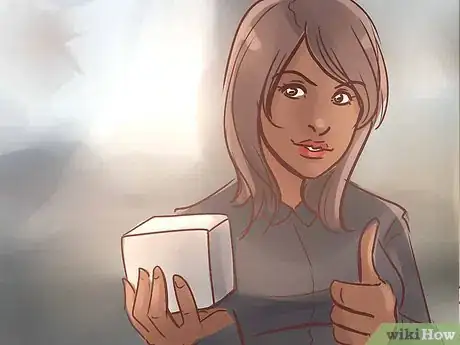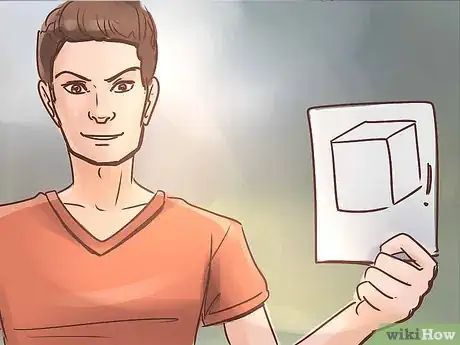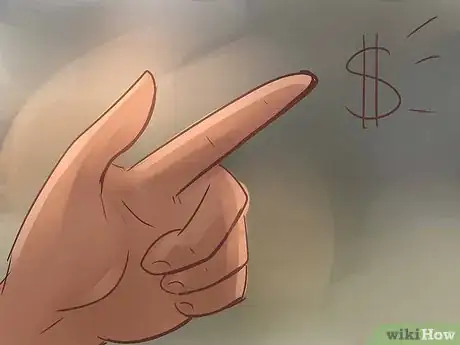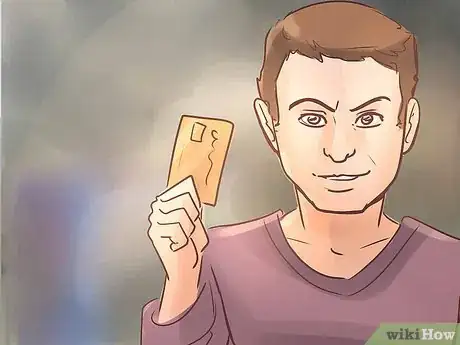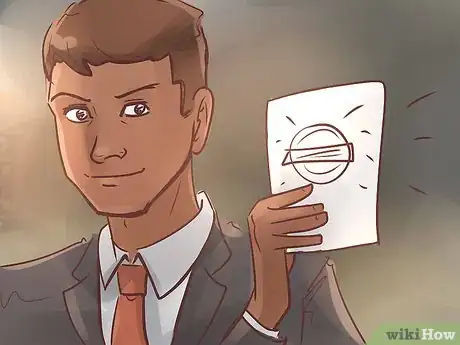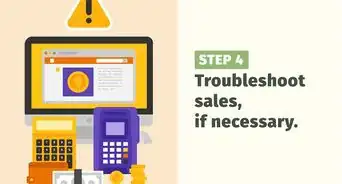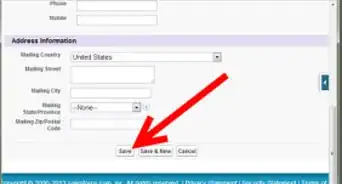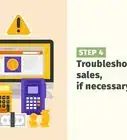This article was co-authored by Linda Chau. Linda Chau is a Public Relations Specialist and the CEO and Founder of PAAPR Agency (Public Attention And Public Relations). With over a decade of experience, she specializes in strategic planning, brand storytelling, press communication, and reputation management. Linda holds a BA from The University of California, Riverside and has been featured in AdAge, Austin Business Journal, and more.
There are 8 references cited in this article, which can be found at the bottom of the page.
This article has been viewed 50,236 times.
Increasing sales is often the core objective of business owners or managers. To maximize sales, you need to start with a great product or service, then continuously refine it to increase demand and stay ahead of your competition. To reach the highest numbers of potential customers, you need to develop your marketing strategies and cultivate a successful sales team. Finally, to keep those customers coming back you'll need to use a variety of incentives designed to build brand loyalty. Maximizing your sales will require using all of these strategies simultaneously.
Steps
Refining Your Product or Service
-
1Identify your ideal customer. In order to determine the best way to refine and then sell your product or service, you'll need to identify your ideal customer. Start by looking at the benefits that your product offers and thinking about whose needs are best met by those benefits. Work to identify this person from a demographic standpoint, including their gender, age, education, income, and location. Try to understand their values and interests. The clearer picture you can get of your ideal customer, the easier you can sell to them.[1]
- For example, the owner of a high-quality music streaming service might find that his service appeals most to young adult to adult males with large amounts of disposable income who live in urban areas.
-
2Refine your product to meet customer needs. You should constantly make an effort to reassess the quality and usefulness of your product to your ideal customer. Accept and solicit feedback from customers about issues they've had with your product or service. You can then make changes to suit their needs and eliminate defects. Doing so will keep your product or service competitive and help you retain customers.Advertisement
-
3Improve quality control. In order to build customer loyalty, prevent negative reviews, and reduce return expenses, you'll need to find a way to improve quality control on your products or services. Set a product quality goal and determine how you will measure customer satisfaction. From there, you can invest in training for your employees and institute ways to ensure that each product is checked thoroughly before reaching your customer.[2]
- For example, set a goal for a maximum percentage of damaged or faulty products you're okay with producing, for a certain number of customer complaints you think is acceptable, or for a certain customer wait time.
-
4Analyze your pricing strategy. In theory, there is an ideal price for your product or service where supply meets demand. However, actually finding that point can be difficult. Setting the price too high can drive away potential buyers and setting it too low cuts into your margins. Start looking into your pricing strategy by examining how your competitors are pricing their products. Then, adjust your price for the perceived quality of your product, if necessary.
- If your product is sold as premium alternative, you may be able to charge more than competitors. If it is a discount option, expect to charge less than competitors.
- You can always adjust your prices to see how your sales will respond. This method of trial and error might hurt your bottom line for a while, but finding the best price point will help you in the long run.[3]
Marketing Your Offerings Effectively
-
1Determine your competitive advantage. Your competitive advantage is what your business offers customers that your competitors cannot offer. Competitive advantages can arise from exclusivity, quality, uniqueness, or cost. For example, one business might be able to undercut all of its competitors on price and remain profitable. Another business might have a competitive advantage by offering a unique or patented service. Figure out what your competitive advantage is and then use it to form your primary marketing statement.[4]
- For example, the premium music streaming service mentioned in the previous example might advertise as "the only platform that streams at a rate of 1411 kbps."
- If you're trying to sell web design services, you might comment on what you offer that website building software cannot.
-
2Focus on your audience's needs. Your marketing efforts need to effectively get your message across to your ideal customers. Focus on tailoring your message so that it speaks to the problems and needs of your ideal customer. Your advertising content and visuals need to be in line with the interests and values of your ideal customer while still reflecting your business's brand.
- Try to pinpoint your target customer's "pain points," which are problems that your product or service can solve, and design your marketing strategies around addressing them.
- For example, a customer might be unhappy with the quality of the product or service they are currently using. Other pain points might include high prices or hard to use products or services.
- This should also be applied to the channel you use for advertising. Only use those that your ideal customers are likely to use as well.
- For example, some customers may not use the radio or television very frequently, but often find themselves browsing online. In that case, you would want to focus marketing efforts online.
- Try to pinpoint your target customer's "pain points," which are problems that your product or service can solve, and design your marketing strategies around addressing them.
-
3Provide specifics about your offerings. Your marketing materials need to do more than just tell your ideal customer that you can fix their problems. You need to give product details in a concise way, being clear about exactly how your product or service is used and what it does.
- Then, provide proof of your claims by offering some type of data or content to back up your claims.
- These can include customer testimonials, reviews, success rates, rankings, or other statistics.
-
4Track and analyze your marketing strategies. Whenever you launch a new marketing strategy, make sure to track your returns from that strategy. Look for rises in sales that occurred after a new strategy was implemented. You can then compare the return to the cost of the strategy to assess your return on investment.
- This metric can then be used to redirect future marketing efforts to make them more efficient and effective.[5]
Maximizing Sales Team Performance
-
1Create a sales plan. You sales team should operate based on a sales plan that prescribes certain actions for each step of the sales cycle. Salespeople should know how to generate leads and what to do at each stage of customer interest before a sale. Then, the team should be skilled in driving referrals and repeat business after the sale. The sales plan should be designed to direct them at each of these stages.[6]
-
2Gather more sales leads. Sales leads are prospective customers that may be interested in your product or service and have provided contact information. You can improve your odds of earning a sale by starting from a larger pool of sales leads. Direct your salespeople to use a variety of methods to increase sales leads. Everything from simple cold calling to local networking can help you gain exposure for your product or service and reach a larger audience of potential customers.
- You can also work through referrals by previous customers and by "influencers" to reach large groups of new customers.
- Another option is to try affiliate marketing, which is working with another business that attracts similar customers, but not does directly compete with you, to promote each other's products or services.[7]
-
3Analyze and improve your conversion strategy. Your sales team should have a strategy in place to convert customer awareness into sales. Try creating an ideal timeline for the conversion process, including points of contact and the desired result of each. Work on figuring out the best way to get potential customer contact information and how to get your message to them through various channels.
- Analyze the effectiveness of promotions, different contact methods, and direct solicitations on your conversion rate.
- Focus on building a relationship and selling value, rather than just selling the customer as much as you can.[8]
- Make sure that your website is driven to convert—a lot of that revolves around copy. Without copy, no one can find your website; so, you need to not only have those words, but have those words be compelling enough so people hang around your site.
-
4Focus on improving customer relationships. The goal of your sales team, beyond increasing sales, should be to develop relationships with customers. Customers should think of your sales team members as trusted advisors in your industry that can help them choose the right product or service for their needs.
- Train your salespeople to listen to customers in an effort to identify their problems and hesitations about buying.
- They should be able to link those problems to the benefits offered by your product or service and address any hesitations the buyer might have.[9]
Earning Repeat Business
-
1Follow up with customers after the sale. If at all possible, follow up with your customers after the sale. Work to get the customer's address or email address during the transaction process. Then, send them a simple thank-you message and contact information they can use to get in touch with you if they have any problems with your product. This space can also be used as an opportunity to promote complementary add-ons to the product or service they purchased.
- Give the customer the option to opt in to your mailing list so that you can send them regular updates.
- Use a mailing service, whether physical or email, to send out updates and special offers to your mailing list every few weeks or once a month.[10]
-
2Identify your best customers. A well-known philosophy of business states that 80 percent of your sales come from 20 percent of your customers. These are your largest, best customers. Because they provide the majority of your business, they should also receive the majority of your attention. This also includes those customers who recommend your business to friends and those who are frequent returning customers. Identify these customers by looking at your sales records.
- Once you have a list of your best customers, look for similarities between them. If they're businesses, are they primarily big or small? If they are individuals, what are their primary demographic qualities?
- Use this information to focus your marketing efforts.[11]
-
3Create a loyalty program. Loyalty programs can be a good way to retain your best customers. They can come in several forms, including points earned for purchases, monthly or annual spending tiers, or VIP programs that offer special savings or exclusive products. A VIP program can even be a paid program where a customers pay an annual fee to have access to discounts. This ensures that customers will continue buying from you as long as they are in the VIP program, as they have already invested in it.[12]
-
4Sell customers complementary or similar products. Businesses can increase their sales by offering complementary products. These "add-ons" go with or are necessary to the functioning of your primary product or service. You can offer these add-ons to customers during or after the transaction as a way to quickly increase your sales. These add-ons should be framed as a convenience so that the customer doesn't feel like they are being up-sold.[13]
- For example, coffee shops often sell pastries or other breakfast foods that can be purchased with the coffee.
- Salespeople need to be trained in explaining the benefits of add-ons clearly and convincingly. This will help the customer see how they work together to create a complete package.[14]
-
5Offer discounts and other benefits. You can drive customers to purchase more of your product by offering discounts, benefits like free shipping, or free trials or samples of your products or services. These can be offered to existing customers through your mailing list or given to customers who reach a certain purchase threshold.
- For example, you might give a 10 percent discount to customers who purchase more than $200 worth of goods.
- However, don't offer too many of these discounts or make the threshold very low. If you do, customers will start to consider your products or services to be worth less than full price.[15]
-
6Build a strong brand. A powerful way to build customer loyalty is by cultivating a strong brand for your business. Your brand is the sum of the customer-facing aspects of your business and includes your product strategy, business values, community involvement, marketing, customer experience, and every other aspect of your business that customers can see.
- Work to standardized your brand across your marketing materials, employees, and business locations.
- If customers know they can trust their experience with your product and customer service, they will be more likely to choose you over competitors.
Expert Q&A
-
QuestionWhat do you recommend for building up customer relationships?
 Linda ChauLinda Chau is a Public Relations Specialist and the CEO and Founder of PAAPR Agency (Public Attention And Public Relations). With over a decade of experience, she specializes in strategic planning, brand storytelling, press communication, and reputation management. Linda holds a BA from The University of California, Riverside and has been featured in AdAge, Austin Business Journal, and more.
Linda ChauLinda Chau is a Public Relations Specialist and the CEO and Founder of PAAPR Agency (Public Attention And Public Relations). With over a decade of experience, she specializes in strategic planning, brand storytelling, press communication, and reputation management. Linda holds a BA from The University of California, Riverside and has been featured in AdAge, Austin Business Journal, and more.
Public Relations Specialist Open and transparent communication is essential to maintaining customer satisfaction. The proper expectations must be set from the beginning of the relationship.
Open and transparent communication is essential to maintaining customer satisfaction. The proper expectations must be set from the beginning of the relationship. -
QuestionHow can I show empathy to my customers?
 Linda ChauLinda Chau is a Public Relations Specialist and the CEO and Founder of PAAPR Agency (Public Attention And Public Relations). With over a decade of experience, she specializes in strategic planning, brand storytelling, press communication, and reputation management. Linda holds a BA from The University of California, Riverside and has been featured in AdAge, Austin Business Journal, and more.
Linda ChauLinda Chau is a Public Relations Specialist and the CEO and Founder of PAAPR Agency (Public Attention And Public Relations). With over a decade of experience, she specializes in strategic planning, brand storytelling, press communication, and reputation management. Linda holds a BA from The University of California, Riverside and has been featured in AdAge, Austin Business Journal, and more.
Public Relations Specialist To show empathy to your customers, your customers have to feel heard and understood. Addressing an issue in person or over the phone, rather than over email or text, is best. Give the customer your full attention and let the customer communicate their frustrations or concerns before providing a solution. Provide feedback to encourage the customer to continue talking so they can reveal everything that’s on their mind–– such as a smile, nod, and eye contact.
To show empathy to your customers, your customers have to feel heard and understood. Addressing an issue in person or over the phone, rather than over email or text, is best. Give the customer your full attention and let the customer communicate their frustrations or concerns before providing a solution. Provide feedback to encourage the customer to continue talking so they can reveal everything that’s on their mind–– such as a smile, nod, and eye contact.
Expert Interview
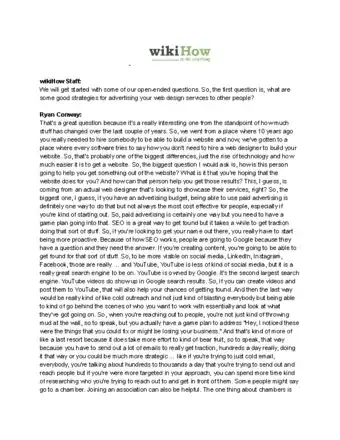
Thanks for reading our article! If you'd like to learn more about improving sales, check out our in-depth interview with Ryan Conway.
References
- ↑ http://www.briantracy.com/blog/sales-success/proven-strategies-to-increase-sales-of-your-product/
- ↑ http://www.inc.com/guides/2010/09/5-ways-to-improve-quality.html
- ↑ http://www.briantracy.com/blog/sales-success/proven-strategies-to-increase-sales-of-your-product/
- ↑ http://www.briantracy.com/blog/sales-success/proven-strategies-to-increase-sales-of-your-product/
- ↑ http://www.verticalresponse.com/blog/10-retail-marketing-ideas-to-boost-sales/
- ↑ https://www.sba.gov/blogs/8-ways-boost-sales-your-small-business-services
- ↑ http://www.inc.com/guides/find-new-customers.html
- ↑ https://www.sba.gov/blogs/8-ways-boost-sales-your-small-business-services
- ↑ https://www.retaildoc.com/blog/how-to-increase-retail-sales-three-tips
- ↑ http://www.streetdirectory.com/travel_guide/19721/sales/10_common_sense_ways_to_maximize_your__sales.html
- ↑ https://www.sba.gov/blogs/8-ways-boost-sales-your-small-business-services
- ↑ https://www.ecwid.com/blog/how-to-maximize-revenue-from-existing-customers.html
- ↑ http://www.streetdirectory.com/travel_guide/19721/sales/10_common_sense_ways_to_maximize_your__sales.html
- ↑ https://www.retaildoc.com/blog/how-to-increase-retail-sales-three-tips
- ↑ https://www.ecwid.com/blog/how-to-maximize-revenue-from-existing-customers.html


